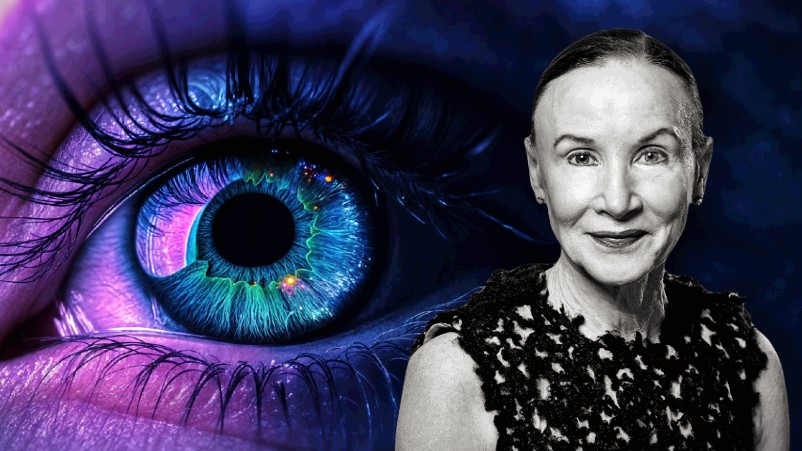Why generative AI won't replace proper PRs or journalists any time soon
Generative AI will almost certainly replace PRs that largely email pitches and press releases and the pseudo journalists that copy, paste and publish them with, at best, a different headline and intro. But the algorithms cannot replace the contacts, back-channelling, horse trading and clandestine restaurant meetings on both sides of the coin that sort the wheat from the soon-to-be automated chaff, says Dominic White.
During SXSW Sydney in October, I squeezed into half a dozen breathless sessions on the opportunities and threats artificial intelligence poses.
In between, I spoke to fellow delegates and discovered a common concern. The question they most wanted answered was: “What will AI mean for my career?”
That question struck home last week when I stumbled upon a forecast from a computational intelligence expert that put PR professionals on a hit list of jobs most at risk from AI.
So, I called the author, Associate Professor Niusha Shafiabady from the Peter Faber Business School, to understand her thinking.
The professor explained her model found AI can replace the job of managing an organisation’s communications and promoting its public image.
According to her paper: “Algorithms can look at [public image and communications] through the inputs they receive and objectively aim [at] different groups to promote an organisation or a client.”
I thought about it for a minute and said: “You’re really onto something there, professor… and I disagree wholeheartedly.”
Let me explain.
AI is already changing PR. We use it for both efficiency (to speed up tasks, such as media monitoring, and reporting and automate other repetitive work) and effectiveness (through proprietary advanced AI).
AIs such as this are designed to pre-empt brand issues before they become brand issues, and spy opportunities early by scraping vast tracts of data that would take a human several lifetimes to scour.
They can scan and interpret real-time social media conversations, sentiment trends and emerging topics to help clients better analyse and anticipate the virality, velocity and impact of social conversations about their own actions as well as external issues and events.
They can also sniff out disinformation in an instant, which is handy in today’s bewildering social media environment.
But this is not a zero-sum game, and I am here to tell you reports of the death of the public relations advisor have been greatly exaggerated.
Organisations also need savvy, connected people on their side to help them navigate today’s dizzying and capricious information landscape.
The role of strategic counsel, confidante and (occasional) confessor remains as distinct to the human realm as that of the provider of long-term media and government relationships that can make a difference.
That is in part because, as I wrote six months ago, reports of the death of journalism have also been overcooked.
As with PR, AI will change and enable journalism in as-yet-unknown ways. Large language models (LLMs) are already turning media releases into passable (if not Pulitzer Prize-winning) stories.
Mi3 has led the charge with its Fast News service. It translates the deluge of media releases, that I am reliably told clog the Mi3 inbox, into short stories curated by an experienced human editor to ensure quality control. It allows Mi3 to be serve as both a “paper of record” for the industry, while freeing up its journalists to get on with the value-added work of analysing and interpreting industry trends and developments.
This month in Sydney I learned that The Financial Times has adopted a similar approach. At an FT Live event called “Generative AI Strategies for Financial Services”, The FT’s Australia and Pacific Correspondent explained that whilst “The Pink ‘Un” was initially cautious on AI, given it could simply regurgitate a writer’s work, it is now well involved.
The Financial Times also employs AI for both efficiency (to create audio summaries and bullet points for stories) and effectiveness (“computational journalism” whereby writers can set AI to work on huge datasets to find stories they wouldn't be able to find manually in this lifetime).
More breathtaking AI tools will doubtless emerge that enhance both journalism and PR.
However, unless and until android overlords take over humanity one fateful day, history tells us LLMs will not replace the human touch of the well-trained journo with a nose for a story.
Scholars say we have gossiped for at least 50,000 years, probably many more. We have relied on journalists since the Ancient Greeks for the inside story from the parts of society few of us get access to.
(A former Fleet Street colleague of mine has based a very successful career on his theory of "the time value of gossip", which states "if you hear a piece of reliable, well-sourced gossip you should spread it as quickly as possible before it loses value").
AI cannot share useful gossip (unless it’s illegally eavesdropping on human interactions). Moreover, it cannot pop into a minister’s office in the corridors of power, signal a trusted source to check a hot tip, grab an off-the-record beer with an investment banker, doorstop a chairperson or hold a CEO’s feet to the fire on an earnings call.
This is the messy evolved stuff of human interactions that makes news content so popular, so compelling, and can so often make or break a brand.
You only need to look at the slew of corporate scandals in recent weeks on the front pages and news bulletins of the Australian media to see the damage the venting of pent-up rumour and frustration can wreak upon a company’s value. All were the result of great, old-school journalism.
It is why brands need street-smart Homo sapiens in their corner – as well as astonishing algorithms – to help protect and enhance their reputations.
An Australian journalist wrote on a recent LinkedIn thread on this very topic: “I can count on one hand the PRs I would always pick up the phone for, any time — day or night. It’s not because they have the clients I want to talk to the most or the cool tech I want to review. It’s because of relationships.”
If PR professionals can foster such relationships and give great advice – guided by gut feel, experience and phenomenal technology – they should be doing this PR thing and delivering ROI for their clients for a good while yet.
Feel free to ask me again after SXSW Sydney 2034.


